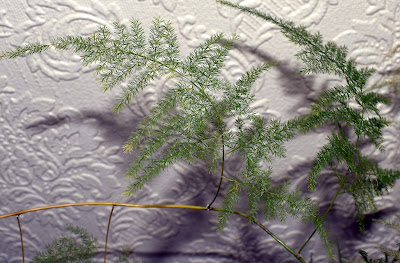Air plants are really fascinating and beautiful houseplants. We love having ours, it is such a pretty and unusual little plant. We bought one air plant and were delighted when it grew a baby airplant or delightfully named "pup". Now as you can see in the photos, the "pup" is nearly as big as its parent !
Their ability to survive and thrive with little or no soil is amazing and really beautiful, unusual varieties are now easily available.
They truly adapted beautifully to their natural environment and with a few care needs we can enjoy them close up as house plants. They originate mainly from Mexico and South America. They do not root in the soil like most plants but instead use their wiry roots to attach themselves to tree branches or rocks or even man made structures like telephone wires. In their natural environment air provides them with all they require.
Their official name as a group is Tillandsia but most of us will know them as Air plants which so aptly describes them.
There are over 600 different species of air plants, each exhibiting its own distinctive shape, size, and color. Some common varieties include Tillandsia ionantha, Tillandsia cyanea, and Tillandsia xerographica. All are really fascinating.

|
| Air Plant |
Care Of Air Plants
Air plants, live with no soil to sustain them and obtain all their nutrients and moisture from the air around them.
I find them quite easy care plants but there are a few vital needs that must be met to ensure the plants stay healthy.
We need to avoid placing them in direct sunlight. This will burn or scorch the leaves so make sure that any light is diffused by the gentle light shade of other plants or a window covering.
There are no soil requirements for Airplants.
All the water and nutrients are absorbed via special scales called trichomes which cover their leaves.
In their original natural habitat it would have been humid so it is important that we give them a mainly humid environment.
Misting them with water every few days or placing them in a tray filled with water and pebbles will increase localised humidity for them and they will appreciate it. They cannot tolerate soaking for days at a time though.
Just misting will not be enough though, they must also be watered.
Watering is necessary but it must be done with extreme caution to prevent root rot.
It is best to submerge the plants in water upside down for thirty minutes every one to two weeks. I try to do it every week but if I forget the air plant does not seem to mind too much. I would not leave it any longer than 2 weeks though or the plants may start to suffer. In very warm weather you can water them in this way more often.
I simply turn mine upside down so that the water will not collect in the crown of the plant and submerge in a glass of warm water for about half an hour. I do find room temperature water is best, as I feel that ice cold water might be a bit of a shock. Also it is preferable to use rainwater rather than tap water due to the chemicals in tap water.
It's important to shake off any excess water to prevent moisture from pooling in their base. Once dry I gently place back in its holder. They should be allowed to dry completely before being placed back in their display area or container.

|
| Air Plant Submerged In Glass Of Water Upside Down |
4. Air Circulation
The main risk to air plants is rot. Air plants benefit from proper air circulation which prevents stagnant moisture from accumulating on their leaves, reducing the risk of rot.
To enable this process we must position them in places that are well-ventilated.
Alternatively you can use a small fan to create an artificial air current but it should be possible in most situations to give good natural ventilation.
In the summer it is fine to place the air plants outside on a warm day, especially if it is a humid day. I do always being them in at night.
Air plants in our homes appreciate a balanced, diluted fertilizer every few weeks. I find once a month is fine and enables me to remember to do it on the first of each month.
We need to buy a specialised fertiliser specifically for air plants to provide them with the necessary food to thrive.
How To Display Air Plants.
Due to their versatile nature, air plants can be displayed in various creative ways. You can get quite artistic with them to suit the style and decor of your own home or workplace.
They can be grown in plant frames, glass terrariums, mounted on driftwood or stones, grown on ornamental shells or placed in hanging plant holders. I currently have mine in a glass holder filled with white perlite.
As I get more I would like to have them displayed in hanging baskets and placed on driftwood as I think that is healthy for the plants and they look very beautiful and quite stunning that way.
Air plants are very low maintenance plants once we understand their needs and how to meet them. I feel with a little guidance they are suitable for a beginner with house plants or any garden plants.
Their stunning appearance and unusual habit also makes them a lovely choice for house plant collectors or anyone who likes a more unusual house plant display.
As it is easy to buy small specimens it means that you can have quite a lot in one room and they do not take up much space. In fact I think they add to the decor and ambiance of a room.
More House Plant Reviews
Reviewing How To Take Care Of Your House Plants On Vacation













































